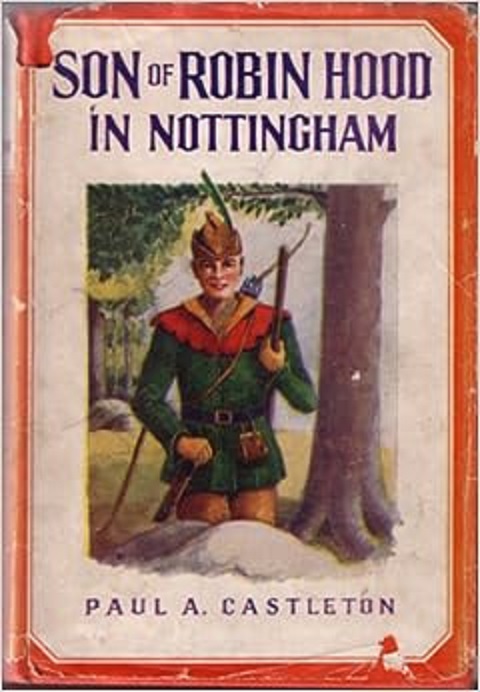Book Review: Son of Robin Hood in Nottingham by Paul A. Castleton
Young Merion is the eponymous son of Robin Hood by Lady Marian (in this version, Robin is actually Robert of Locksley, a knight unjustly convicted and stripped of his lands.) He has come to live with his father in Sherwood Forest in the previous volume, and has his own boon companion in Dick O’ the Lea, a stout-hearted peasant lad.

In this volume, the boys learn of a group of young robbers in Doncaster who steal from the poor and give to themselves. Merion decides it would be a fun and useful project to smash the gang, reforming those they can and kicking the rest into the arms of the law. With some help from Robin Hood and the Merry Men, our heroes proceed to do just that.
At a guess, this book was written for boys of about twelve. It avoids most difficult vocabulary associated with the time period, and has a very idealized depiction of forest life in the Middle Ages. There’s a lot of friendly rough-housing and non-malicious ribbing of one’s peers.
Merion is a star character of the old school, handsome, athletic, clever, skilled well beyond his age in manly endeavors and blessed with a strong sense of justice and an unerring judgement of character. The only time he’s even slightly wrong-footed in the story is when he meets a pretty girl, and even then he quickly adjusts and proves good at music and love poetry as well. (The girl exists only to be a love interest, sorry fans of action girls.)
Dick is Merion’s Little John, and the rest of the boys are similarly one-note. But the antagonists of the piece are even less fleshed out, even Hatch, leader of the robbers Merion is out to smash, shows no traits that would incline one to believe he could manage one boy, let alone a score or more. The one note of subtlety is given to (of all people) traditional Robin Hood villain Prince John, who in his cameo appearance is mentioned as “most gracious when the mood suited him.”
The opening pages are teeth-gritting, as the narrator puts on a “hail fellow well met” style, and Merion and Dick temporarily break the fourth wall. Thankfully, the narrator dials it back a notch for the actual story.
Good, I think, for younger readers looking for more in the line of Robin Hood stories where good triumphs over evil in a cakewalk.

